Thieves in transport: A side-by-side comparison of bike & car thieves
Whether you ride a bike or drive a car, I’m sure everyone would agree that there’s no bigger bummer than having your personal vehicle of transportation stolen. In my short life, I’ve already had one bike and one car stolen from me (though to be fair, the car was my Dad’s, a rusty blue 1988 Honda that and probably broke down 10 minutes after the thief screeched away). When you have a car or bike stolen, you lose your ride home, and more importantly, you probably won’t ever get it back. You can go to all the trouble to file a police report, but the truth is, most sad souls whose bikes are pilfered will never be able to recover their bikes, and many people who have their cars stolen never see their vehicles again.
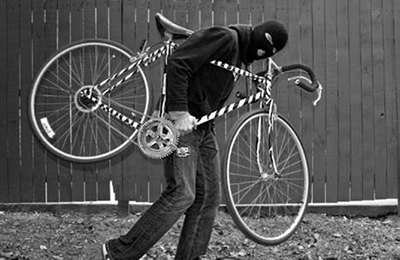
They wear masks to hide their clean-shaven, boyish faces
So what kind of sick, twisted sociopath goes around stealing decent people’s bikes and cars? To start, probably not the same one. Bike thieves are often young miscreants, as opposed to car thieves, who are generally older and more staunchly established in the criminal world; in other words, if someone were taking off with my bike, I wouldn’t hesitate to hit him with a flying tackle, but I might think twice before roundhouse kicking a car thief.
Bike thieves may be less intimidating than car thieves, but they are considerably more common. In fact, bicycle owners are three times more likely to have their bikes stolen than are car owners their cars. This is because bike theft is often an opportunist crime; a bike thief will simply steal a bike because it is there or because it is not adequately locked. Some locks are not secure enough to withstand hand tools like pliers; bikes are also much easier to steal when they are flyparked to street furniture instead of bike racks. Bike thieves are criminals of convenience, often stealing only when the weather is nice and a quick getaway assured.
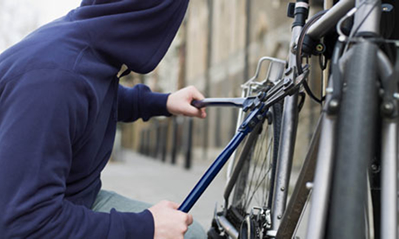
Large pliers are often the instrument of choice for bike thieves
If follows, then, that bike stealing is usually not a cash enterprise or a premeditated business venture. Most thieves are males below the age of 20 with “limited rationality” (read: morons). These petty thieves are motivated purely by the (often fleeting) desire to have a bike: 75% of stolen bicycles are taken for transportation purposes, ridden from point A to point B and then abandoned. This motivation is especially prevalent on college campuses, where students often steal bikes from each other and then immediately abandon them. This accounts for a higher theft rate and a higher recovery rate on college campuses.
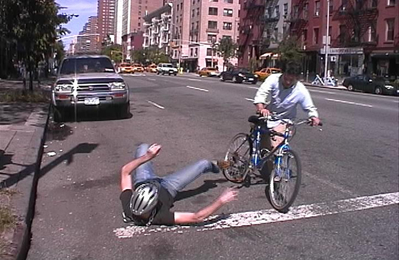
Of course, college campuses, those so-called “risky facilities,” generally have higher proportions of expensive bikes, which does make stealing a more profitable business venture there. Some small-time crooks attempt to make a living (or at least skate by) by stealing bicycles, but it’s a high-risk job with a high-risk payoff, as these pedal pilferers often end up behind bars. Just ask Mark Halligan, a former junkie and erstwhile bike thief now serving time in federal prison for a string of bike thefts in the Oregon area.
Bike theft may also be an entry-level job, a gateway crime that leads its perpetrators down a road of criminal delinquency, turning young mischief-makers into full-blown professional car thieves. Obviously there’s no hard evidence for this, but it’s an interesting possibility. The transformation from bike burglar to car thief would be a momentous one, for there’s a big difference between Billy the impulsive, teenage bike thief and Percy the Porsche Pilferer, an older, more polished criminal with the skills to pick locks and hot-wire engines.
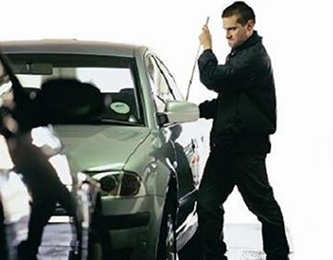
Car thieves often target luxury cars, like the BMW
Car thieves are of an older, more professional breed. Some car thieves steal cars for temporary or personal use — maybe a joyride around town in some broker’s Cadillac — but many others steal for financial gain. Car thieves can take a car to a chop shop to strip its parts, and then sell the parts individually. Auto poachers lucky enough to make off with expensive luxury models may also opt to resell the vehicle for a reduced price.
Car thefts are far more likely to occur in cities and urban areas. In fact, city-dwellers are 100 times more likely to have their cars stolen than are suburbanites. Car theft is a high-stakes enterprise — a grand theft auto conviction pretty much warrants automatic jail time, even for non-violent, first-time offenders — so it attracts a more seasoned, committed criminal than does bike theft. Still, car theft may be turning less and less attractive as a means of making a living. Motor vehicle theft rates have fallen over 5% in each of the past two years.
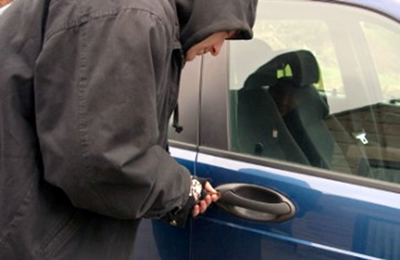
There is no set race or look for car and bike thieves, but there is a general trend distinguishing one from the other. Bike thieves are usually young men under the age of 20; car thieves are generally slightly older men. Both breeds can be found in cities, but bike thieves also flock to large college campuses where nice bikes are readily available for the taking. Bike theft is generally an impulsive acquisition of personal transportation, while car theft is a more professional crime often undertaken with the intention of flipping the vehicle for cash.
So how can you protect your cars from this rampant thievery? Get a lock for your steering wheel (or maybe just move to the suburbs). Car theft is hard to prevent, and it can happen to anyone, but at least the motor vehicle registry and GPS devices make it easier to track down a stolen car.
Bike theft victims do not have access to the same resources as those who lose their cars, and bikes are extremely hard to recover once lost. If you’d prefer not to run around New York City asking strangers if anyone’s seen your Pink Cannondale, your best bet is to register your bike. A registered bike is far more likely to be recovered, as it can be readily identified by police, and sites like MyAssetTag.com are developing national registries for this very purpose. Of course, whether you ride around town in a 2012 Mercedes AMG or a beat-up 1987 Huffy, don’t forget to lock your vehicle securely.
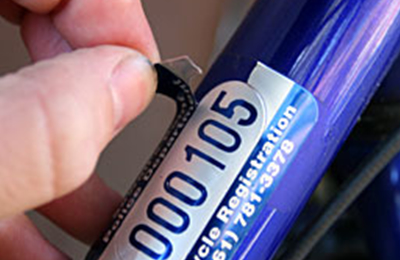
– Z. Miller













